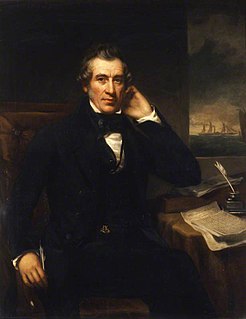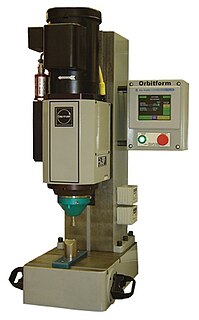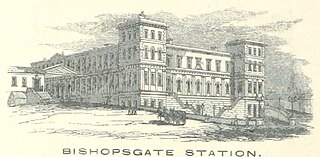
William George Armstrong, 1st Baron Armstrong was an English industrialist who founded the Armstrong Whitworth manufacturing concern on Tyneside. He was also an eminent scientist, inventor and philanthropist. In collaboration with the architect Richard Norman Shaw, he built Cragside in Northumberland, the first house in the world to be lit by hydroelectricity. He is regarded as the inventor of modern artillery.

James Hall Nasmyth was a Scottish engineer, philosopher, artist and inventor famous for his development of the steam hammer. He was the co-founder of Nasmyth, Gaskell and Company manufacturers of machine tools. He retired at the age of 48, and moved to Penshurst, Kent where he developed his hobbies of astronomy and photography.
Hydraulic rescue tools are used by emergency rescue personnel to assist vehicle extrication of crash victims, as well as other rescues from small spaces. These tools include cutters, spreaders, and rams. Such devices were first used in 1963 as a tool to free race car drivers from their vehicles after crashes.

William Henry Barlow FRS FRSE FICE MIMechE was an English civil engineer of the 19th century, particularly associated with railway engineering projects. Barlow was involved in many engineering enterprises. He was engineer for the Midland Railway on its London extension and designed the company's London terminus at St Pancras.
The year 1871 in science and technology involved some significant events, listed below.

Sir William Fairbairn, 1st Baronet of Ardwick was a Scottish civil engineer, structural engineer and shipbuilder. In 1854 he succeeded George Stephenson and Robert Stephenson to become the third president of the Institution of Mechanical Engineers.

Joseph Bramah, born Stainborough Lane Farm, Stainborough, Barnsley Yorkshire, was an English inventor and locksmith. He is best known for having invented the hydraulic press. Along with William George Armstrong, he can be considered one of the two fathers of hydraulic engineering.

Matthew Murray was an English steam engine and machine tool manufacturer, who designed and built the first commercially viable steam locomotive, the twin cylinder Salamanca in 1812. He was an innovative designer in many fields, including steam engines, machine tools and machinery for the textile industry.

Henry Rossiter Worthington was an American mechanical engineer, inventor, industrialist and founder of the American Society of Mechanical Engineers in 1880.

A hydraulic power network is a system of interconnected pipes carrying pressurized liquid used to transmit mechanical power from a power source, like a pump, to hydraulic equipment like lifts or motors. The system is analogous to an electrical grid transmitting power from a generating station to end-users. Only a few hydraulic power transmission networks are still in use; modern hydraulic equipment has a pump built into the machine. In the late 19th century, a hydraulic network might have been used in a factory, with a central steam engine or water turbine driving a pump and a system of high-pressure pipes transmitting power to various machines.
William Bridges Adams was an English author, inventor and locomotive engineer. He is best known for his patented Adams axle — a successful radial axle design in use on railways in Britain until the end of steam traction in 1968 — and the railway fishplate. His writings, including English Pleasure Carriages (1837) and Roads and Rails (1862) covered all forms of land transport. Later he became a noted writer on political reform, under the pen name Junius Redivivus ; a reference to a political letter writer of the previous century.
A jack, screwjack or jackscrew is a mechanical device used as a lifting device to lift heavy loads or to apply great forces. A mechanical jack employs a screw thread for lifting heavy equipment. A hydraulic jack uses hydraulic power. The most common form is a car jack, floor jack or garage jack, which lifts vehicles so that maintenance can be performed. Jacks are usually rated for a maximum lifting capacity. Industrial jacks can be rated for many tons of load.

Nathan Read was an American engineer and steam pioneer.

A riveting machine is used to automatically set (squeeze) rivets in order to join materials together. The riveting machine offers greater consistency, productivity, and lower cost when compared to manual riveting.

A hydraulic intensifier is a hydraulic machine for transforming hydraulic power at low pressure into a reduced volume at higher pressure.

"Fowler's Ghost" is the nickname given to an experimental fireless 2-4-0 steam locomotive designed by John Fowler and built in 1861 for use on the Metropolitan Railway, London's first underground railway. The broad gauge locomotive used exhaust recondensing techniques and a large quantity of fire bricks to retain heat and prevent the emission of smoke and steam in tunnels.
John McFarlane Gray, also known as J. Macfarlane Gray, was a Scottish engineer who invented a portable steam riveting machine and a steam steering mechanism for Isambard Kingdom Brunel's famous SS Great Eastern.





















